Ni No Kuni: Wrath of the White Witch (Ni No Kuni) had a lot to deliver. It was not only made by the guys from Level-5, who gave us some of the best action-RPGs of the previous generation, but it had the crafty hand of Studio Ghibli behind it as well. In a way, this could be the definitive RPG of a generation, a game combining the talent of video game experts and masters of animation. It’s understandable that Level-5 may have underdelivered in their most recent efforts, but the echoes of Rogue Galaxy, Dark Cloud, and Jeanne d’Arc were still strong.
The end result is a charming one. Ni No Kuni delivers a stunning journey across another world as young Oliver copes with the recent loss of his mother and desperately searches for a way to bring her back. The special touch from Studio Ghibli is all over the place, from the incredible hand-drawn cutscenes to the artistic choices of magical places, creatures, and characters.
It is not all glory though, as Ni No Kuni suffers from a lot of superficial content to increase the gameplay count and ultimately struggles to probe deeper into this world of magic and wonder.
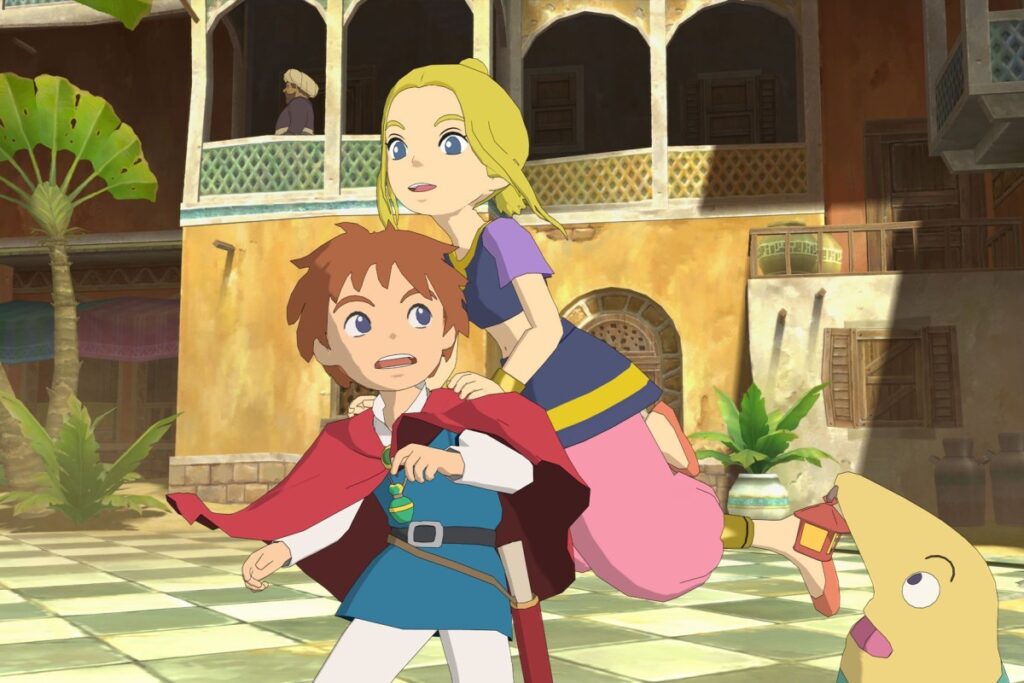
The Visual Identity
The most easily recognizable aspect of Ni No Kuni is its visuals. The game looks gorgeous, combining the traditional style of Studio Ghibli with cell-shading graphics akin to what Level-5 did for Rogue Galaxy back in the Playstation 2. Of course, everything was upped a notch.
Young Oliver, Esther, Swaine, and everyone else in Ni No Kuni look like a proper stylized character from a Studio Ghibli’s film. The simplified textures of their clothes when combined with the shadows and cartoonish special effects is just a perfect hit. The game is one of the most charming on Playstation 3, managing to evoke the feeling of a fantastic journey of an animated film.
This same charm given to characters, however, is not exactly translated to the scenery. While overall they look superb, they seem overly generic and not a match to the characters. They lack the drawing contours and the shadows seem just like that of any ordinary polygonal game current on the market. The saving grace to these scenery is the design, which creates some magical places that become intriguing just to look at, like the Deep Dark Wood and the Nevermore castle.
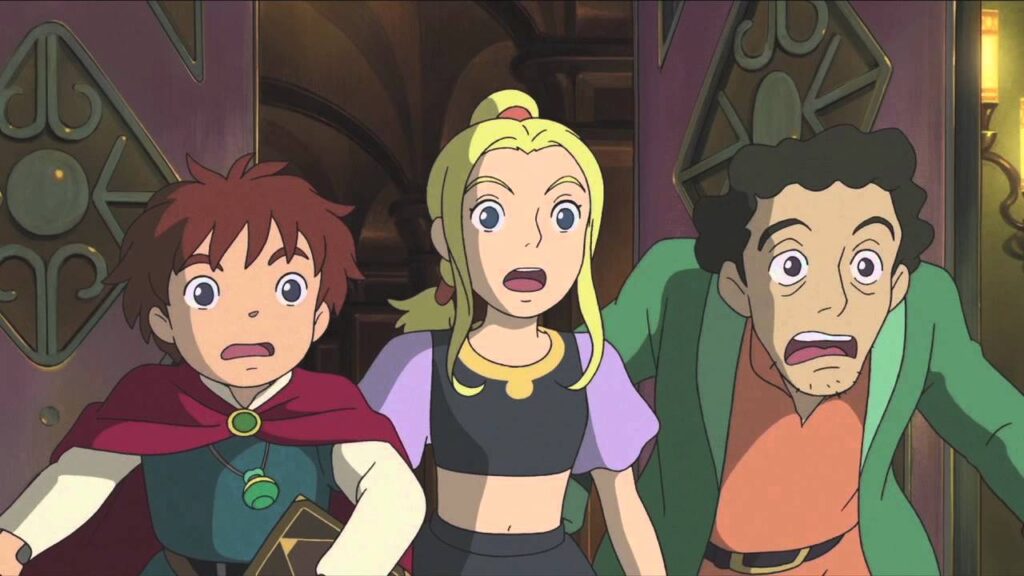
It’s Ghibli Time!
The story of Ni No Kuni follows Oliver, a young boy who loses his mother and sees himself drawn to this new magical world. Along with the company of his fairy friend Drippy, young Oliver will learn how to be a proper wizard, save the world from the cruel hands of the Dark Djinn and try to bring his mother back to life. It’s a charming tale of coping with the loss of a beloved one, where the young boy needs to learn how to fend for himself, find new friends, brave new horizons, and ultimately face the harsh truth.
The potential in Ni No Kuni here is tremendous. Not only the tale starts charming and emotional, but every new place you find yourself in incites you to want to learn more. You will quickly travel through a deep dark forest, negotiate with a cat king, explore a dazzling desert, and see a towering volcano on the brink of erupting. It’s all backed by young Oliver learning about this new world along with you, learning new spells and understanding that he can save the world by helping the people instead of just facing the big baddie. It’s a proper introduction that is quite rare among JRPGs.
Sadly though, Ni No Kuni fails to explore these aspects further. As you quest through the land and find new places, you will certainly notice that side-quests only tend to tackle very simplistic cases of a person who lost her joy over their jobs or maybe are lacking kindness. The game also offers a horde of side-quests where you simply need to kill a monster or two, but that’s it. When not exploring the main quest, you will barely see developments about this magical world and Oliver’s friends.
This can be overlooked early, but as your gameplay clock goes on, these huge amounts of superficial side-quests not only make you lose sight of the real quest, but also look like a wasted opportunity to give depth to the land and to people that really matter to Oliver. Esther, in particular, seems like such a nice and charismatic character that has her past and personality forgotten quite quickly. There are no side-quests to explore her past or to detail what she likes and who she really is. Swaine suffers from it too, being limited to his origin story which is part of the main quest.
Every important NPC becomes just an allegory to this magical world as a result. You speak with random citizens, mend their hearts after a few lines of dialogue, and go face some random monsters while your allies never get one or two extra stories to themselves. Should Ni No Kuni treat their main cast and world with proper care, like most Tales games do, this could certainly help in making the game feel smoother and more natural.
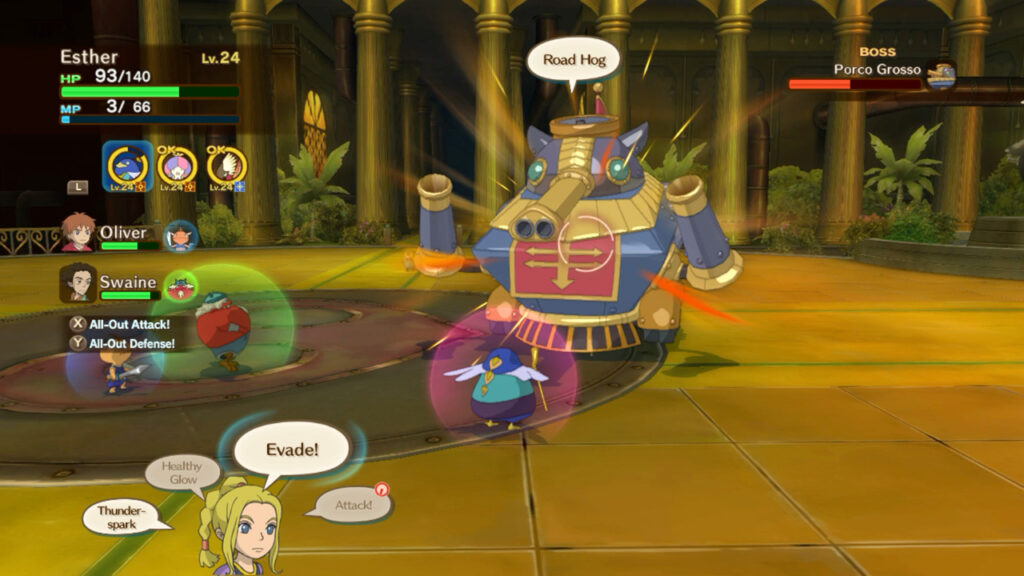
Yes, it is grindy.
Ni No Kuni is an RPG with some real-time elements incorporated. You control one of your three characters in combat and issue commands such as attack, defend, or cast a spell. All of this, however, happens in real time, like in a Final Fantasy game where everyone in the battlefield is also randomly moving around. It’s a decent mixture of concepts, allowing you to move your character and adding another layer to what would be a traditional turn-based affair.
The core of Ni No Kuni’s systems, however, is the familiar: a creature that you can choose to control instead of your character. There are hundreds of familiars to tame and use, with evolutions like a Pokémon game, special abilities, different stats spread, movement speed, and so on.
You will spend a lot of time taming and developing your familiars for combat too. Oliver, Esther, and Swaine may be capable characters on their own, but they pale in combat capability when compared to some properly trained familiar. As a result, you will spend most of your time shifting between the three familiars a character can use in battle, while capturing dozens of new ones and trying your hand with new combinations.
It’s an enjoyable system overall that is hampered by some unbalancing issues and, most importantly… grind.
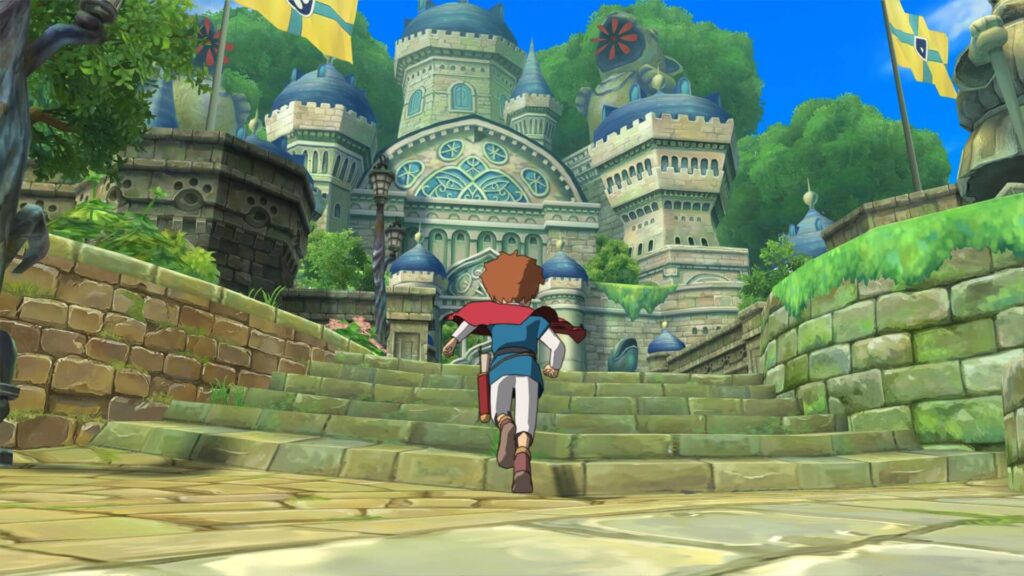
Ni No Kuni, on the surface, seems like a game dedicated to newcomers, to casual players who enjoy Studio Ghibli’s works or maybe even to some young teens. As you play through, Ni No Kuni shows its real hand: a game that demands too much time for little gain.
Grind, as most people know, is a constant during the game. At first, the game can be incredibly hard, with some challenging boss fights and difficulty spikes that can hinder even veterans of the genre. It all boils down, however, to investing time to get along with the game’s initial difficulty. It may be a few dozen more battles or a few more quests, but once you get in line with the game, Ni No Kuni starts to bother you by always demanding more of your time.
The side-quests, besides being overly simplistic as I’ve mentioned, will often require you to go back and forth to dungeons and other cities. Sometimes you will come back to deliver a quest just to learn that yet another one will require you to get all over the end of the dungeon you just visited. It’s a lot of backtracking that slowly wears you out and makes you lose sight of the game’s charming main plot. Again, if these side-quests were invested in developing your more important allies or giving depth to the world, these would be much more enjoyable.
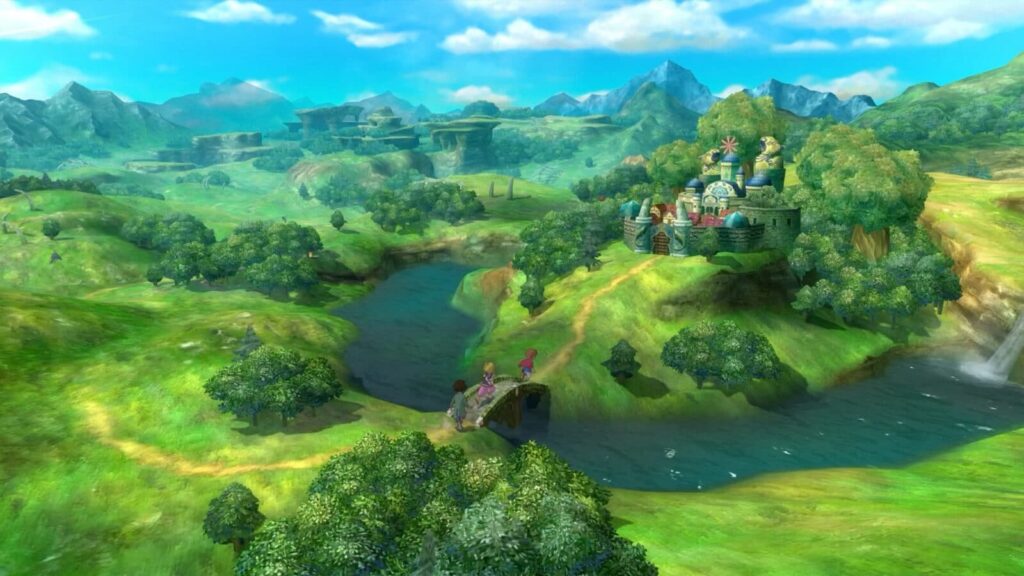
An even more grindy post-game
Those who wish to partake in the post-game content are up to even more time-sinkers. Taming and developing some familiars may take quite some time, there are new hordes of quests making you retrace your steps in every dungeon to fight optional monsters, and plenty of the craftable items require you to move out of your way to farm a few dozens of items.
Once again, none of the post-game content enhances the story or the characters of the game. They just exist to make you play for more time searching for ingredients.
This would be acceptable if the game’s difficulty curve were more stable, but as you train some of your familiars you will notice that a few of them are so obviously better and that others can only be properly used by the time you’ve done everything the game had to offer. It’s wasted content over wasted time, which makes the game feel exhausting after a while.
It’s a charming game, but with plenty of compromises
In a way, Ni No Kuni creates something charming and enticing, delivering a beautiful world and a sad tale about loss and coming of age. It is, however, always haunted by terrible design choices to inflate game time. It may be common for RPG players to see this, but not only Ni No Kuni doubles down in these time sinkers as well as it advertises itself as something tangible for new players with it’s partnership with Studio Ghibli and sweet tale. This means that it ends up not exactly working wonderfully for hardcore lovers of grind and becoming frustrating for newcomers too.
It’s not a failure though. Ni No Kuni’s charm and traditional RPG style is still worth a shot. The characters may suffer from a lack of exploration in side-quests, but they are incredibly charismatic, especially with the japanese voice-acting, which is also in style to what one would expect from Studio Ghibli’s films. The wonderful world, the joyful combat system, and the simple equipment and skills system are also its strengths.
What Ni No Kuni misses is a bit more focus. It wastes too much of its optional content in quests that add nothing to this wonderful world. If only they were just a few… but no, there are dozens and dozens of similar side-quests and optional content, all of those with a high wall of grind in front of them. I could only imagine if Esther, Swaine, Pea, Marcassin, Kublai, and everyone else had proper side-quests to explore them and the world where they live. Well, not this time though.
Summary
-
Production
-
Content
-
Polish
-
Concept
-
Fun
